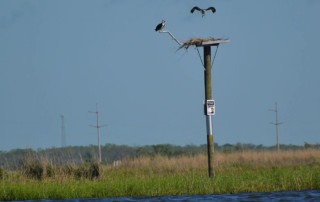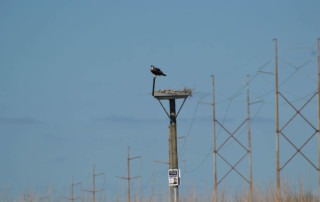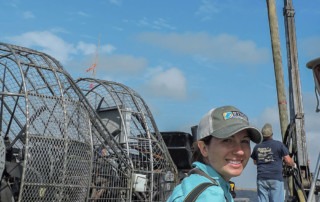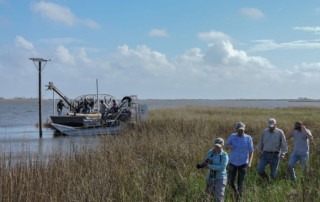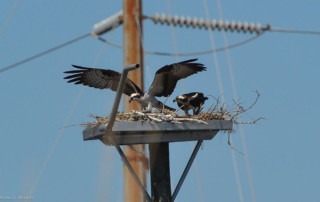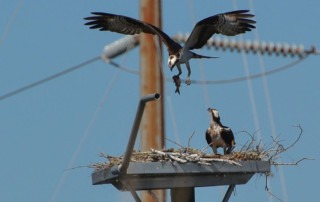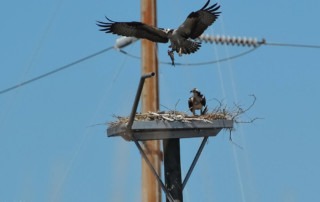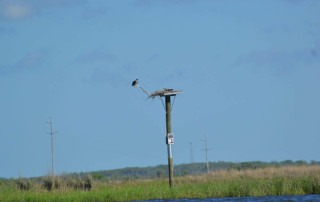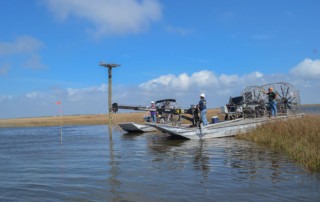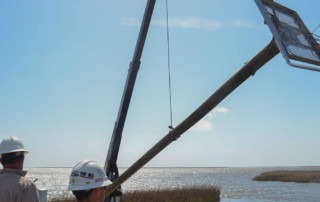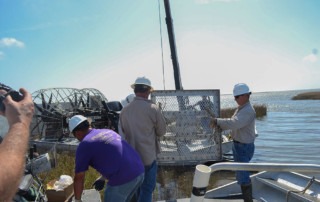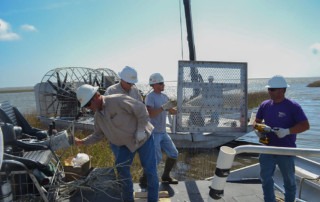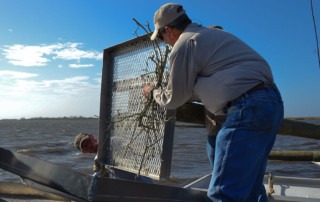
The Osprey (Pandion haliaetus) is one of the most widely distributed birds in the world and its preference for fish makes it a top predator within aquatic systems. Ospreys feed almost exclusively on fish throughout their entire life cycle and therefore are an excellent indicator species that can be used to monitor habitat conditions, fish populations, and overall health of our estuaries.
Osprey populations in the 1950s and 1960s suffered from the negative effects of the pesticide DDT. After DDT was banned in the U.S. in 1972, populations rebounded; however there are still many risks this unique bird of prey must face in their daily lives. Contamination in rivers and lakes, habitat loss, and electrocution from attempting to nest on utility poles are some of the challenges the species face today throughout its range.
Ospreys living near coastal areas can have a difficult time finding suitable nest sites and often use man-made structures such as electric utility poles, where they are in danger of being electrocuted. Osprey nest platforms can provide important nesting habitat improvements and are known to increase the species nest success.
In February 2018, BTNEP, in partnership with Apache Louisiana Minerals and the Barataria-Terrebonne Estuary Foundation (BTEF) installed ten nest platform structures for Osprey to increase suitable nesting sites within Apache Louisiana Minerals owned land located in Terrebonne Parish, Louisiana. BTNEP and Apache are partnering together to monitor the nest platforms to determine usage and productivity throughout the breeding season. The main goals of this project are to construct and install suitable nesting platforms for Osprey to successfully raise their young and to increase awareness and stewardship of the species and the habitats they depend on to complete their life cycle.
Click here to learn more about the project.


